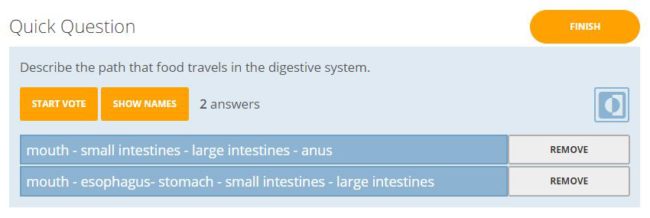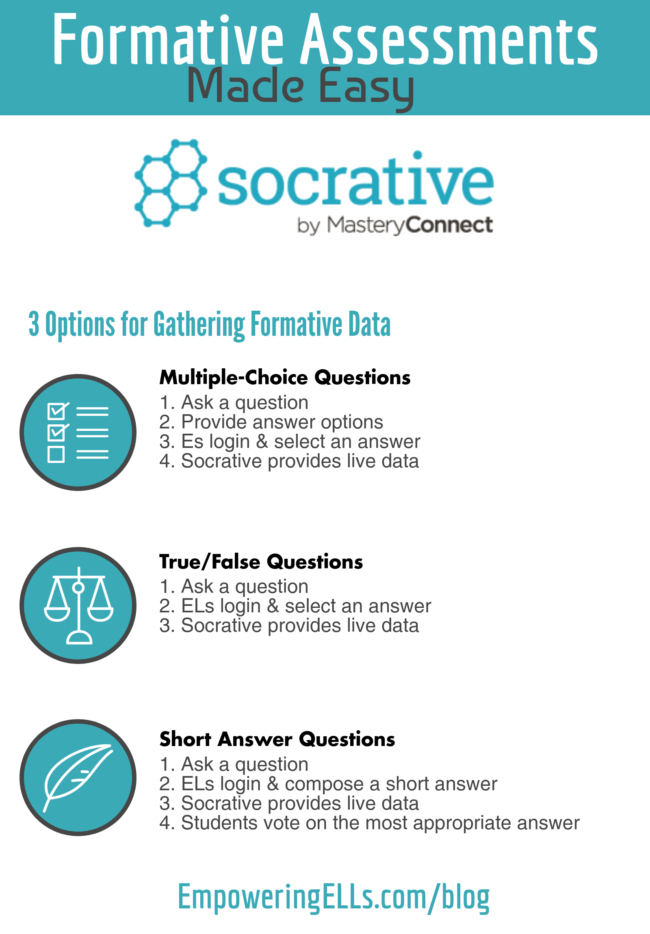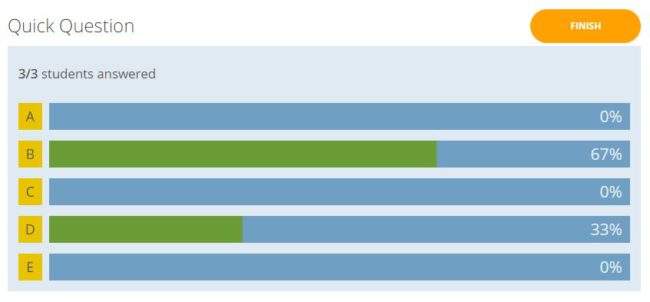This is Part 11 of Transforming Instruction Through Technology series. This article about using Socrative focuses on using technology to gather formative data.
The Content Teacher’s Dilemma
Because I’m a language teacher, I focus on the process of learning, but content teachers don’t have that luxury. Most feel the pressure to cover content to ensure that students are prepared for standardized assessments. Effective content teachers often ask questions that check for understanding. They use these types of questions to formatively assess students’ understanding.
MLs’ Dilemmas
I’ve noticed that ELs are rarely ever asked questions that check their understanding, and they almost never volunteer the answers. It could be because:
- the content teacher doesn’t want to embarrass the ELs by cold calling
- the ELs are afraid of providing the wrong answer
- the ELs are embarrassed by their developing language skills
This causes a problem for both the content teachers and their ELs. The teacher doesn’t know how much the ELs understood the content. They need a tool to help gather formative assessment data in an EL-friendly way.
To assess students using Socrative:
- The teacher launches an activity (quiz, space race, multiple-choice question, true/false question, short answer question),
- gives students the login code, and
- asks a question,
- Students provide an answer on Socrative
- Socrative provides the results
Quick Questions: No Prep Formative Assessments
Of the many features that come with the free version of Socrative, my favorite is the Quick Question because it requires no preparation time on the part of the content teacher.
The Quick Question allows teachers to gather formative data by asking a:
- multiple choice question,
- True/False question, or a
- short answer question
Option 1: Multiple-Choice Questions
The multiple-choice function provides quick data on students’ understanding.
When I provide multiple-choice questions, the partially correct answers help me know what details need reteaching. Often, ELs understand a concept generally but are missing some details, so the partially correct answers reveal their gap in understanding.
To use this function, teachers can simply ask a question and provide up to five possible answers. I recommend posting or projecting the multiple choice answers to aid the process of ELs. Students then log in with the classroom code to provide an answer. The results will appear like the such:
Option 2: True/False Questions
The True/False function is also effective and is more easily administered than the multiple-choice question because it doesn’t require providing all the answer options. Teachers gain a quick gauge of students’ understanding and can reteach as needed.
The teacher simply presents a statement and allow students to evaluate the correctness of that statement on Socrative.

Option 3: Short Answer Questions
Sometimes, answers are not as black and white as True/False questions and require explaining, which the multiple-choice questions can’t facilitate. In these instances, it’s more appropriate to use Socrative’s Short Answer function because it allows students to write answers to explain their ideas.
The short answers are displayed when submitted. Students are then allowed to vote for the most appropriate one. This feature invites students to think critically about the responses given by their peers.

Live Results
The multiple-choice and the T/F questions provide immediate results in the form of a bar chart. The students’ names can be hidden to avoid embarrassment. Teachers simply get the results and reteach what is needed. No grading is needed to assess students’ knowledge, which is an additional benefit of Socrative’s Quick Question features.
When to Use Quick Question
Quick Questions are most effective right after something is taught. For example, if Mr. Arno just covered how the heart works, he might use the True/False feature of the Quick Question to ask students:
True or False: Deoxygenated blood is blood that contains oxygen.
Socrative will provide live results which will inform Mr. Arno’s instruction.
Takeaways
ELs are not often asked questions that check for their understanding. When they are, ELs are usually not confident enough to provide answers because they’re embarrassed by their English skills. With Socrative, we can ensure that all students can engage with the questions that check for understanding. When this occurs, content teachers can have a better sense of all students’ understanding.
If you’re interesting enhancing learning for ELs by integrating technology, please consider reading ELL Frontiers: Using Technology to Enhance Instruction for English Learners by Heather Parris, Lisa M. Estrada, and Andrea Honigsfeld. By purchasing the book, you also support this blog.



